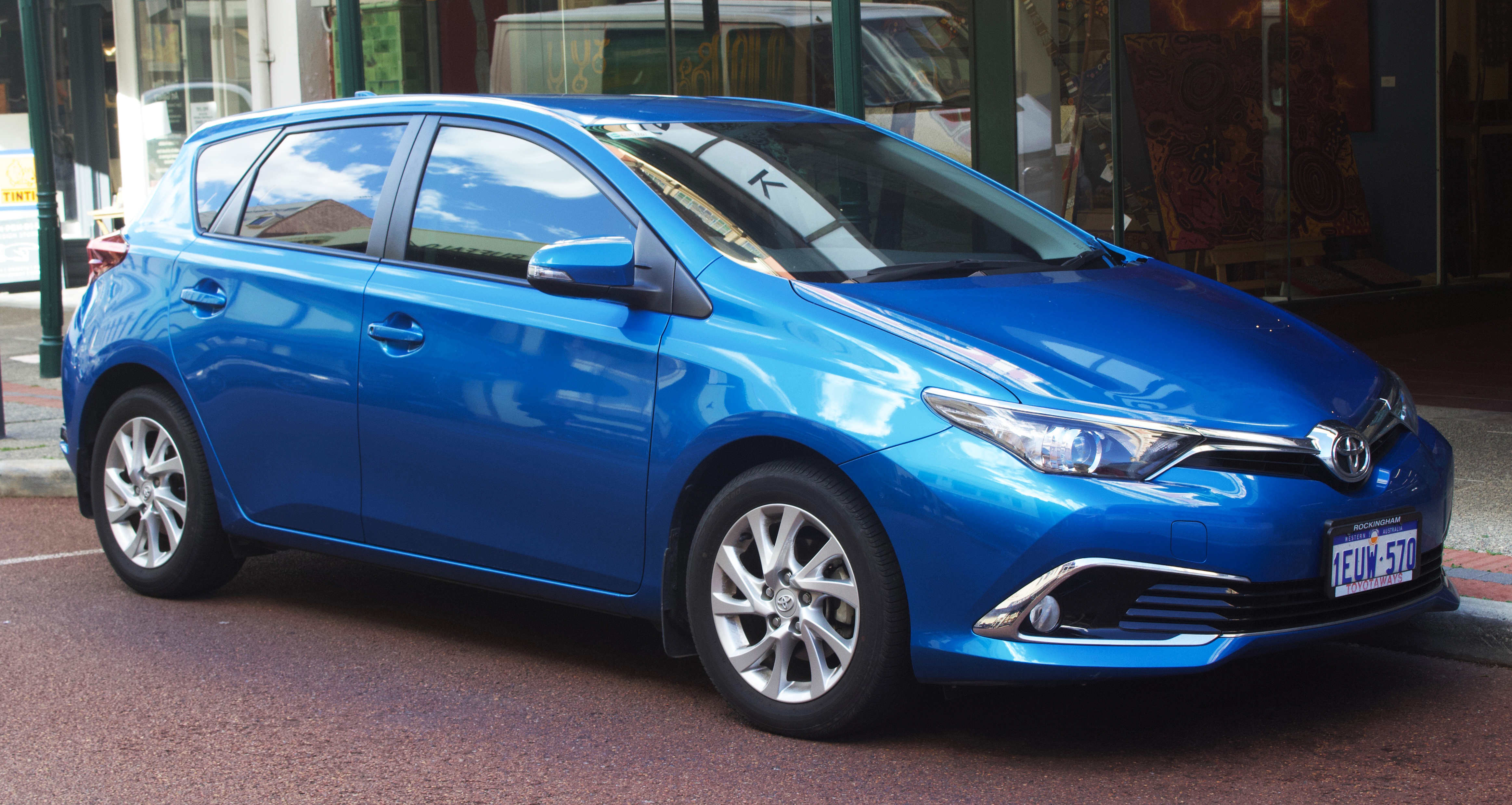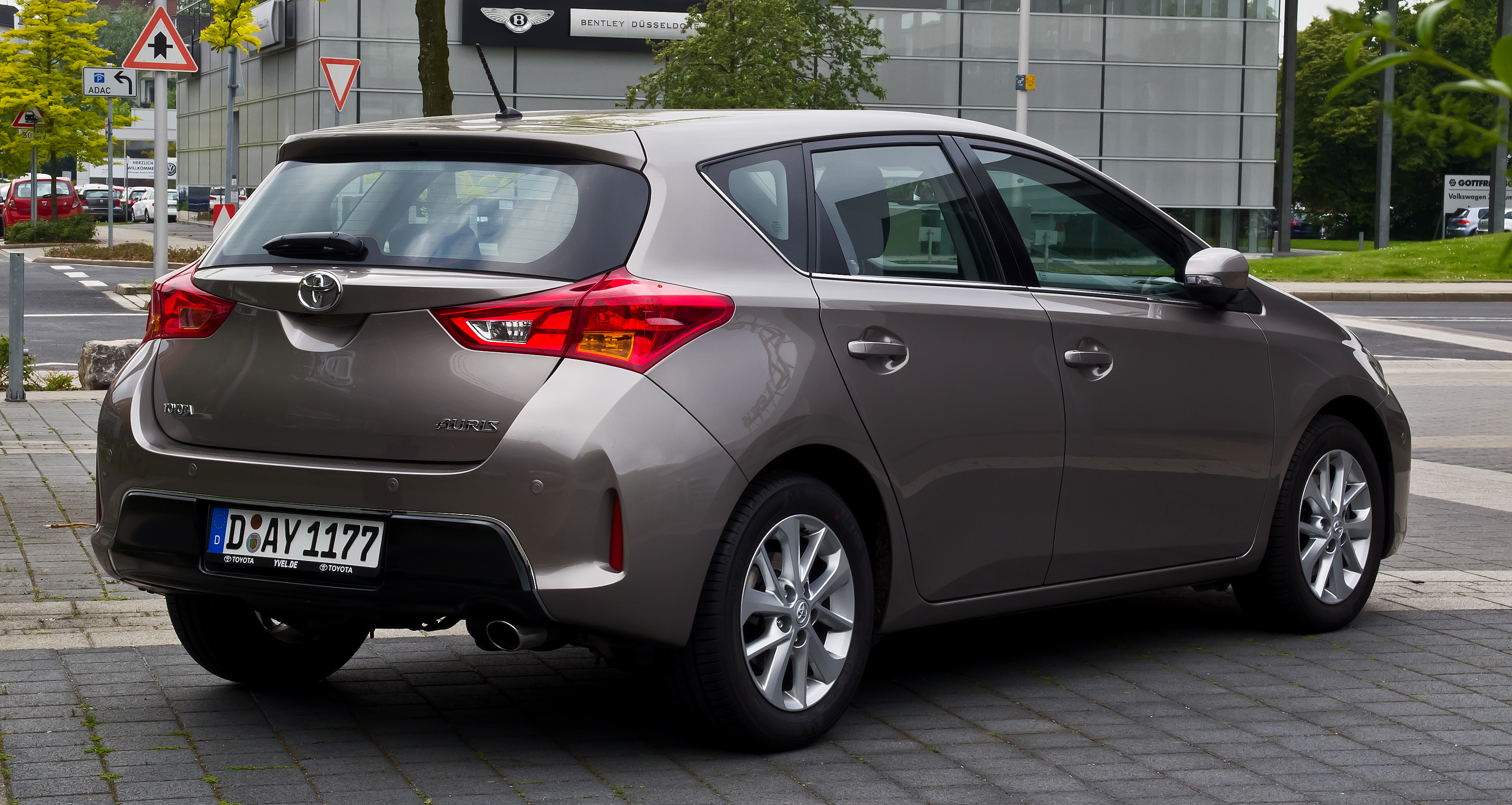Review: Toyota Auris II ( 2013 – 2019 )

Toyota Auris II is a car as similar to the previous generation as the similarity between Donatella Versace pre-suregery and post-surgery. If Toyota Auris II were a person, it would be Steve Buscemi in the movie “30 Rock”.
The first generation Auris was a great car for people who just wanted basic, solid, reliable transport that did its job adequatly. In fact, in this world of reliable, solid vehicles built for those past their prime, in the compact area the Toyota Auris is king. Except that the Toyota Auris II has turned over a new page and made a mistake by leaving the kingdom and entering the battlefield of all-purpose-good-at-everything-excelent-at-nothing compacts, a sector dominated by VW, Ford, Mercedes, Hyundai, Audi, Kia, Dacia, and all manufacturers except Subaru and Suzuki.

So how did the Toyota Auris II evolve?
First of all, it traded the conservative and harmless looks from the past for a fresh look that also appeals to young people (or atleast younger than 80). But did it work? Do young people even look at Toyota? Yes, there are some well-executed cars like the Yaris or C-HR, but the Auris? And this is basically where the old folks were driven out because the first Auris was famous for its higher seating position and wide-opening bootlid, so even the old folks could load luggage easily and get in and out of the car with ease. You may laugh now, but when the arthritis comes, you’ll see you’ll make the ease of getting in and out of the car an genuine buying criteria. And unless you’re a graduate of the school of life and spend your days dodging swords, knives, the police and other people bent on paying back your deeds, you’ll catch the age of arthritis. If you’re a school of life graduate however, you don’t care about arthritis because you won’t catch that age. And most likely neither Toyota Auris II.
If in the first generation you had a choice of engines, here on the Toyota Auris II they played aggressively for the hybrid powertrain. The petrol and diesel offer is emptier than the menu of a pub in a train station where beer is served from a plastic crate which sits in the sun and the menu itself has only two pages and has holes carved out by cigarettes.
The Toyota Auris II comes packed with gym-like technology, that’s how packed it is. Everything is electronically monitored and adjusted, and unless you’re 12 you won’t understand all the functions and all the menus. The higher specc’ed versions really don’t appeal to those who want simplicity and don’t want to learn HTML, Python, Java, and other programming languages just to operate an Toyota.

Toyota Auris II Engines
Petrol
- 1.2 Turbo 8NR-FTS of 116 horsepower – Toyota’s first turbocharged petrol launched in 2012, some years after the rivals and they left the competitors such as VW do the real world testing, so they learned from their mistakes and launched a proper turbocharged petrol that is reliabile. And unlike the C-HR with which it shares this engine, the Auris doesn’t need alot of power because it doesn’t look aggresive. An sensible modern engine, for an sensible almost-modern car.
- 1.33 1NR-FE of 99 horsepower – An engine launched in the Yaris that made Toyota’s city car a household name, this petrol engine is sort of like Jen Barber. It can do a decent job, but not quite up for the Toyota Auris II task. Water pump failing, oil consumption, and hard starting in the cold are general issues that appear late in life, after a few hundred thousand km.
- 1.5 1NZ-FE of 105 and 108 horsepower – Once again, this engine was Japan exclusive and this is the most powerful non-Valvematic naturally aspirated petrol engine. And it also had an four wheel drive option available. Such shame that they didn’t export this version outside Japan.
- 1.6 1ZR-FAE of 132-horsepower – This used to be the only relevant petrol engine for the Toyota Auris, even if this engine feels outdated by the rest of the tech in the car. Much like it’s 1.33 cousin, it will develop water pump issues and an appetite for oil later in oil, but the biggest issue is the Valvematic unit.
- 1.8 2ZR-FAE of 143 horsepower – Once again I am asking about the Valvematic unit which was installed here aswell, because it’s going to sting when it’s going to fail. And it’s not a question of “if” but of “when”. Honestly I’d just save up and go for the hybrid version, as that engine does not have valvematic.
Diesel
1.4 D-4D 1ND-TV of 90 horsepower – No. Just no. A popular engine in the Yaris and Mini, but not in the Toyota Auris II. It’s like having Graham Norton carry Chris O’Dowd on his back.
1.6 D-4D 1WW of 95 horsepower – You might be tempted to buy this engine as I was tempted into that van when I was 6, but in both scenarios it would turn out to be a big mistake. Biggest in the case of the Auris. Because this is the dreaded N47 BMW diesel engine, with timing chain stretchings and with the timing chain sitting at the back of the engine, so when you would replace the timing chain and stretchers, the entire engine would have to come out. Hard pass on this engine.
2.0 D-4D 1AD-FTV of 126 horsepower – Yes, the new 2.0 D-4D has solved the famous headgasket issue, but is the diesel really worth it when the hybrid is being promoted so much? In any case, if you have a bizarre fetish with engines that sound like gravel falling out of a wheelbarrow, just know that this home-grown Toyota D-4D comes with typical Toyota reliability. Watch out for the clutch, flywheel, and particule filter instead. So pretty much standard diesel issues.
Hybrid
1.8 2ZT-FXE VVT-i Hybrid – It’s obvious that the Japanese went all-in on the hybrid system for the Toyota Auris II. They modified the 1.8 petrol to run on the fuel-efficient Atkinson cycle, they used the drivetrain from the Prius, and came up with improvements. What’s more, you get the standard 5-year or 100,000km warranty and the optional 5-year battery warranty. Yes, the batteries may cost a few thousand euros, but it still ends up cheaper than classic diesel parts like the flywheel and particle filter. However, this system is not God in Li-Ion version and the system still needs improvements. Also, should the battery run flat you need to use a trickle charger, never charge it straight from another car’s battery.

Toyota Auris II Common Issues
- The satnav is as clueless and more vague than a student attending an oral exam where he only knows the date and the name of the class, he doesn’t even know what’s the subject of the exam.
- Toyota Safety Sense sometimes works, and sometimes it doesn’t. As I said, the Toyota Auris II comes with more technology than El Chombo and his semi-philosophical songs. Toyota Safety Sense analyses road and weather factors and makes automatic adjustments to the drivetrain, steering, and lighting system, detects pedestrians, potential accident risks, speed limit zones, etc. Only we’re talking about first-generation TSS here, which doesn’t always work properly.
- Not the most soundproof car possible, as with the rest of the Toyota range from this period. Moreover, the paint quality is also Toyota’s substandard quality. If you actually care about the appliance-white painting.
- The Multimode semi-automatic gearbox is still a bad choice in life that you should avoid.

Toyota Auris II Verdict
Why did they take this car out of the comfort zone and throw it into the all-purpose compact meatgrinder? They had a warm sweet spot, they had a target audience, and they had sales. Now they want a car full of technology. But if you want a compact that’s essentially a laptop on wheels, you buy a Lexus CT. Or maybe you buy the Toyota Auris II because you couldn’t afford a Lexus CT?
Which engine do you recommend? If I had to think about it with the first generation Auris, with the Toyota Auris II it’s clearly, unquestionably the hybrid model which reigns king. Plus Toyota pumped the most money and care into the hybrid system and offered some mediocre classic engines. I’m not a huge fan (or any kind of fan) of hybrids, but on the Toyota Auris II, this configuration makes the most sense.
Similar Articles

Review : Toyota Verso AR20 ( 2009 – 2013 )

Review : Skoda CitiGO ( 2011 - 2020 )

Review : Seat Mii ( 2011 - 2020 )
Write an answer
- Review : Toyota Verso AR20 ( 2009 – 2013 ) 10 November 2025
- Review : Skoda CitiGO ( 2011 - 2020 ) 02 August 2025
- Review : Seat Mii ( 2011 - 2020 ) 02 August 2025
- December 2025
- November 2025
- October 2025
- August 2025
- July 2025
- April 2025
- March 2025
- February 2025
- January 2025
- December 2024
- November 2024
- October 2024
- August 2024
- July 2024
- June 2024
- May 2024
- April 2024
- March 2024
- February 2024
- January 2024
- December 2023
- November 2023
- October 2023
- September 2023
- August 2023
- July 2023
- June 2023
- May 2023
- April 2023
- March 2023
- February 2023
- January 2023
- December 2022
- November 2022
- October 2022
- September 2022
- August 2022
- July 2022
- June 2022
- May 2022
- March 2022
- April 2021
- January 2021
- December 2020
- November 2020
- October 2020
- September 2020
- August 2020
- July 2020
- March 2020